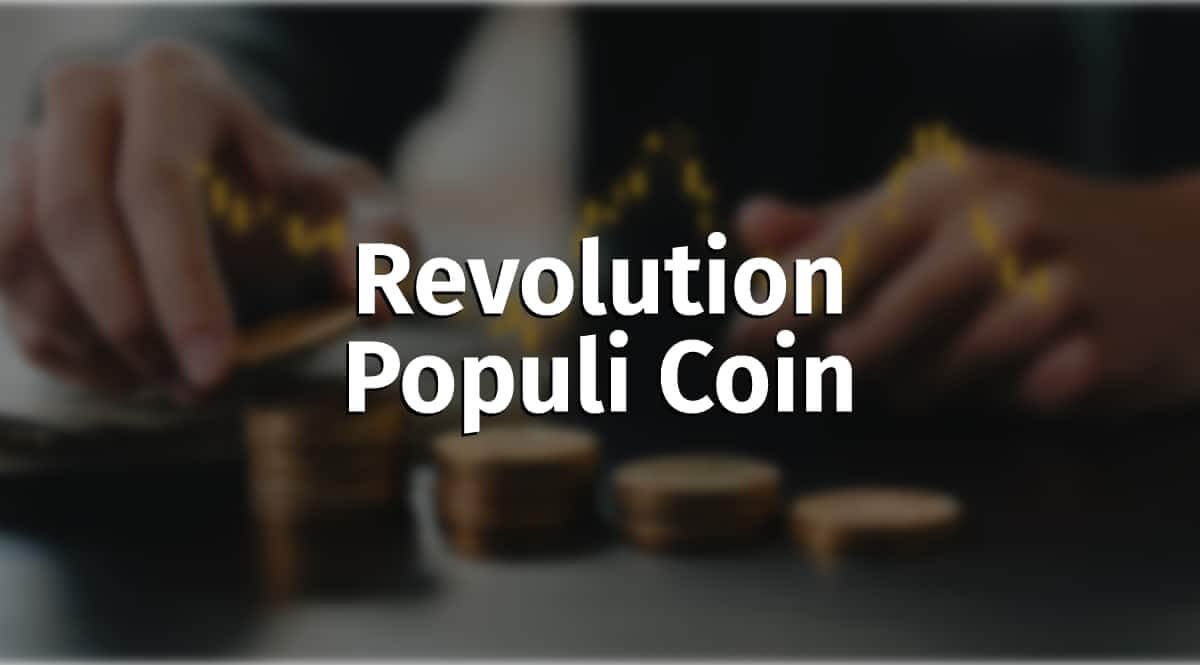
Revolution Populi Coin – All You Need to Know About RVP
In today’s digital age, personal data has become a valuable commodity. Yet, many individuals unknowingly relinquish their data for free when using platforms created by tech giants like Facebook and Twitter.
These companies collect extensive user data and monetize it, raising concerns about privacy and fairness. Revolution Populi is a blockchain-based project that aims to change this paradigm by giving individuals control over their own data, allowing them to decide what information to share and with whom.
Rob Rosenthal, a former Vice President at Goldman Sachs, co-founded Revolution Populi alongside David Gelernter, Paolo Coppola and Todd Aydelotte.
Have you heard about the Revolution Populi coin? Let’s first gather more information about Revolution Populi.
Revolutionizing data control

It is a decentralized user-controlled layer-1 blockchain maintained by a decentralized autonomous organization (DAO).
Revolution Populi employs an innovative consensus mechanism called random delegated Proof of Stake (rdPOS) on its layer-1 blockchain.
In this mechanism, 63 nodes are elected, but only 21 actively participate in consensus at any given time. These 21 nodes are randomly selected from the pool of 63, striking a balance between speed and broad participation. This approach aims to enhance the efficiency and fairness of the blockchain network.
A testnet of Revolution Populi’s Layer-1 blockchain is already operational, and accessible through a block explorer. The project’s blockchain code was open-sourced, underscoring its commitment to transparency and community involvement.
Blockchain technology and its importance

An article about the Revolution Populi coin would be incomplete without mentioning the role of blockchain technology.
Blockchain technology plays an important role in the modern world.
It has emerged as a revolutionary innovation with far-reaching implications across various industries. What’s interesting, it is fundamentally a distributed ledger technology that allows for secure, transparent, and immutable record-keeping of transactions and data.
Role of blockchain:
Decentralization: At the heart of blockchain’s role is decentralization. Unlike traditional centralized systems where a single entity has control over data or transactions, blockchain operates on a decentralized network of computers (nodes). This decentralization enhances security, resilience, and trust since there’s no single point of failure or control.
Transparency: Blockchain transactions are transparent and accessible to all participants on the network. This transparency reduces the risk of fraud and fosters trust among users. Anyone can verify transactions, fostering openness.
Security: The cryptographic techniques used in blockchain make it highly secure. Each transaction is encrypted, and consensus mechanisms ensure malicious actors cannot manipulate the data. This makes blockchain appealing for financial transactions, supply chain management, and sensitive data storage.
Efficiency and speed: Blockchain can streamline processes by eliminating intermediaries and automating tasks through smart contracts. These self-executing contracts automatically enforce terms and conditions, reducing the need for manual intervention and saving time and costs.
Cross-border transactions: Blockchain can facilitate faster and cheaper cross-border transactions, reducing the reliance on traditional banking systems and their associated fees and delays.
Data security and privacy: Blockchain can be used to secure sensitive data, such as medical records and personal information.
Tokenization of assets: Blockchain enables the fractional ownership of assets through tokenization. This can include real estate, art, stocks, and more, making investments more accessible and liquid.
Interesting details about Revolution Populi coin (RVP)

The native asset of the Revolution Populi layer-1 blockchain is the RVP token. As a Proof of Stake blockchain, Revolution Populi coin (RVP) serves various purposes, including staking and electing validators.
Furthermore, Revolution Populi envisions RVP’s use in applications built on top of the core layer-1 blockchain. For instance, social media platforms could reward users with RVP tokens, distributing a portion of their advertising revenues.
During the initial token sale, 1.2 billion RVP tokens (60% of the supply) were distributed. The allocation of the 2 billion RVP tokens is as follows:
- 1,200,000,000 (60%) distributed publicly
- 400,000,000 (20%) blockchain ecosystem reserves
- 200,000,000 (10%) marketing, admin – discretionary
- 200,000,000 (10%) to the RevPop team (locked up for an additional 18 months after Main Net launch & Token Swap)
Clearing House mechanism

In addition to addressing data privacy concerns, Revolution Populi ventures into the decentralized finance (DeFi) sector by building a clearing house mechanism. This mechanism aims to enable users to trade various crypto assets with significantly reduced counterparty risk. It can underpin a decentralized guarantee fund, allowing depositors to earn yields once a trade settles, potentially in RVP tokens.
Final thoughts
Revolution Populi presents an ambitious vision, challenging the data collection practices of tech giants while offering a unique value proposition. While similar projects have struggled to gain significant user bases, the project benefits from the growing acceptance of cryptocurrencies and blockchain technology among mainstream audiences.
The diverse and experienced team behind Revolution Populi provides a solid foundation for its success. So, the Revolution Populi coin has the potential to gain popularity among traders.
The post Revolution Populi Coin – All You Need to Know About RVP appeared first on FinanceBrokerage.

